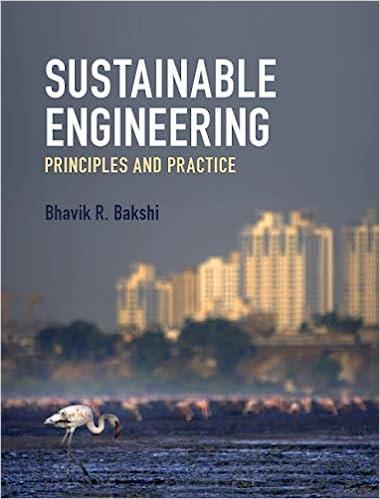An EIP consists of three processes: leather processing, protein hydrolysates manufacturing, and plastofill production. Leather processing produces
Question:
An EIP consists of three processes: leather processing, protein hydrolysates manufacturing, and plastofill production. Leather processing produces 65 x 106 m3/yr of tanned leather, 85,000 ton/yr of chrome liquors, 80,000 ton/yr of fleshing, and 4.6 x 105 m/yr of waste water. Chrome liquors are processed to recover the chromium sulfate that is used in the tanning process. The recovery rate is 1 ton chromium sulfate per 17 tons of chrome liquor. The yield of protein hydrolysates is one ton per 16.7 tons of fleshing. This product is used as fertilizer. The waste water is treated in a facility that produces one ton of sludge per 70 m of waste water. The plastofill process converts 1 ton of sludge into 0.157 ton of plastofill, which is a filler for asphalt. (a) On the basis of this information, is it possible to have an EIP with zero net waste? What is the minimum amount of waste that must be produced? (b) Each of the three processes relies on fossil fuel-based energy and emits 0.2 ton of CO2 per ton of tanned leather, 0.02 ton of CO2 per ton of chromium sulfate, 0.01 ton of CO2 per ton of protein hydrolysate, and 0.05 ton of CO2 per ton of plastofill. Determine the CO2 emission of the EIP. (c) Establishment of the EIP replaces conventional processes for the production of chromium sulfate, protein hydrolysate, and plastofill. The tons of CO2 emitted per ton of each product from these processes are 0.015, 0.008, and 0.045, respectively. Determine the change in CO2 emissions due to the symbiosis. Does the quantity of the CO2 emission justify the EIP?
Step by Step Answer:

Sustainable Engineering Principles And Practice
ISBN: 9781108420457
1st Edition
Authors: Bhavik R. Bakshi





